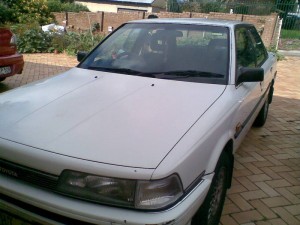Here’s the thing: you have something great to sell, you’ve built a fantastic site, you’ve opened your doors, but no-one’s coming in. It’s the classic build-it-and-they-will-come scenario, which tends to work for ghostly baseball teams in cornfields but seldom in real life. There are ways to get the traffic…. You can painstakingly craft your pages and linking strategy to wring maximum SEO benefit in the hope of turning up on the first page of Google for specific searches. You could go for the sledgehammer and pay SEM dollars to appear on the first page. You can do deals to get other sites to refer in to you. Or you can produce a very cool viral video that tickles the zeitgeist and puts your site on the front page of every news site on the planet. (Some of these are harder to pull off than others, your individual mileage may vary).
Or you can fish where the fish are. After all, do you really think people will squeeze five minutes into their busy day *every day* to go to your site?
This is an age-old retail trick. Think of everything from lunch carts to coffee vans to milkmen – by meeting the customer on the doorstep, they can ensure sales and also do some marketing at the same time. The same applies to online retail, but where do customers live online? Sure, there’s the inbox, but mass eDMs are like the door-to-door salesman: it’s highly unlikely you want to buy what he’s selling but he’s going to knock on thousands of doors to find a few punters. And let’s face it, the in-box is already crowded enough!
So where else are they?
Well, Google. It’s a guaranteed jumping off point for customers starting their shopping journey – over half of purchases in certain categories are researched online first, rising to 90% for consumer electronics. But, getting to the top of the pile in Google means you pay the bucks (to your SEO guy, to Google) to dangle your link in front of would-be customers.
Then there’s Facebook. They have also launched into the ad market, but with a twist: they offer much more targeted campaigns based on the rich demographic data they have on their members. For example, you could choose to reach everyone in Australia – 8.5M Facebook members, (well, today) – or just single females in Sydney aged between 18 and 24 (78,000). Again, your mileage may vary, but you may get much more bang for your buck if you know your market well.
But you could go further. An eCommerce website usually follows this sort of flow: landing page > search/browse results > product details > cart checkout. You can argue that as long as the customer clicks ‘checkout’ you don’t really mind how they got there. So, why not turn the website inside out? Instead of making customers come to you to shop, feed products out to them where they are, for example:
* Deals of the day to their inboxes
* Reading in their Facebook streams when friends comment and brag about their purchases
* Gathering together to demand group discount rates
* Sending out birthday gift lists
* Letting your customers do the selling
By sending your products out in affiliate feeds, emails, Facebook posts, tweets, how your own site works becomes less important. You could empower fashion bloggers to sell the products they mention from their own site (powered by your checkout systems). There is a control issue here, and there is also a requirement to know your customers well (after all spamming a Facebook stream is a good way to lose friends and alienate people!). But by letting shoppers buy your product without ever setting foot in your (virtual) store you increase your reach beyond your site.
After all, what you want are the sales, but running a website to get them can be expensive. If you love your products, perhaps you should set them free…?

